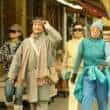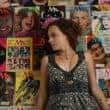Director Ann Shin and producer Hannah Donegan discuss the making of My Enemy, My Brother, Shin’s poignant documentary about two men who fought on opposite sides of the Gulf War.
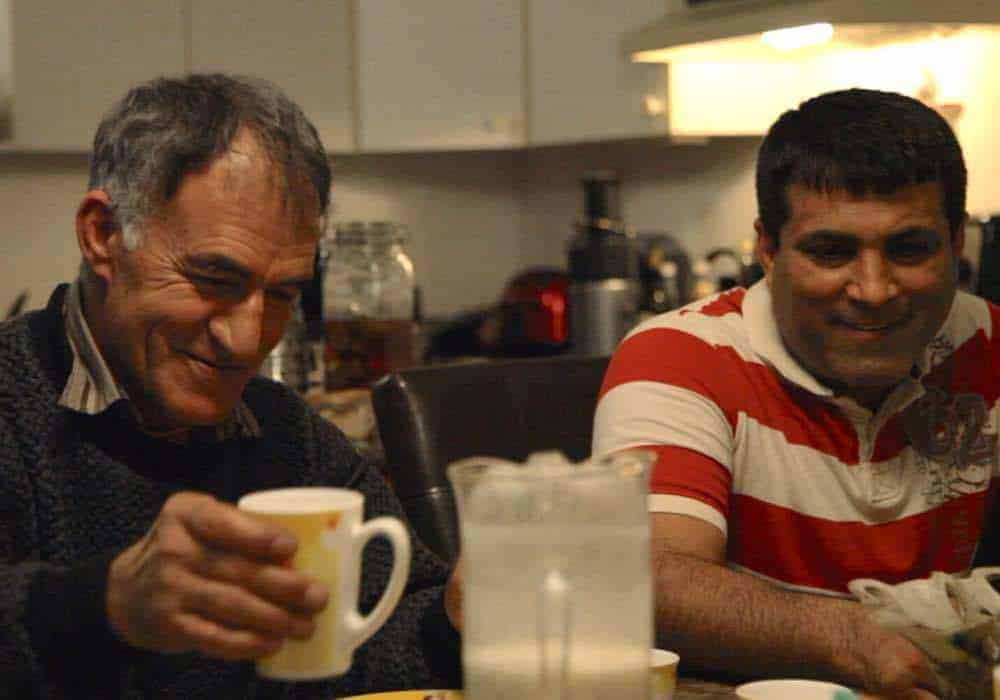
One of the more emotionally impactful documentaries at this year’s Hot Docs Film Festival is Ann Shin’s feature documentary, My Enemy, My Brother. Shin tells the story of two men who fought on opposite sides of the Gulf War conflict, one from Iraq named Najah, and one from Iran named Zahed. The documentary brings these two men back together 25 years later in Vancouver, Canada. Told primarily through archival footage, interviews, and interactions with both subjects’ relatives, the film follows the men’s journey back to where they were from as they search for the families they left behind. Weaving personal history with the political turmoil that has plagued this area for decades, Shin brings humanity to the complex political history of the Gulf wars.
I talked with director Ann Shin and producer Hannah Donegan about the making of this poignant documentary: the research process, designing the film’s aesthetic, and developing emotional reenactments.
Seventh Row (7R): How did you come to make this documentary and connect to these two subjects?
Ann Shin: I was first told about the story by my friend, Greg Kelley, who is the producer at Ideas CBC radio. He was making this radio doc about two former war vets. He said, “You should do a doc about it.” I investigated it when I went to visit my folks who live in Vancouver. Because [Najah and Zahed] live in Vancouver, too, I just looked them up. They were very welcoming. They told me their whole story, and I was bawling. The way they rose above the political differences and how they were with each other. I was so inspired so I wanted to start doing the doc.
[clickToTweet tweet=”‘The way they rose above the political difference…I was so inspired.’ – Ann Shin ” quote=”The way they rose above the political differences and how they were with each other. I was so inspired .”]
7R: Why did you think it was important to capture two different points of view in one film?
Ann Shin: Particularly in our political climate, where there is rampant Islamophobia, I thought it was so important to show the story of two Muslim men who rose above their circumstances. It’s an affirmation of humanity. It’s an instance where two people are supposed to be enemies are really close friends. I’m hoping that people will think twice about who they assume is the enemy, who is the other, or who is a threat, after they see this movie.
7R: How did you approach this vast issue of the past and present Gulf Wars in terms of research?
Hannah Donegan (HS): We had some very skilled researchers: Laura Lucas did a lot of digging for us.
Ann Shin: The initial research was done on YouTube.
HD: Googling and googling. Laura got us into different archives.
[clickToTweet tweet=”‘Audiences want to hear the story. They don’t necessarily want a list of historical facts.’ – Shin” quote=”Audiences want to hear the story. They don’t necessarily want a list of historical facts.”]
Ann Shin: Audiences want to hear the story. They don’t necessarily want a list of historical facts or more statistics. We had to figure out how to provide the proper context in a poetic kind of filmic way.
We had to show some of the historical context, including going back to British colonialism. I don’t know if people realize that the British were in the Middle East and were responsible for dividing territories. Afterwards, there was American involvement. It’s important for people to understand that the conflict that’s going on in the Middle East is not because these countries are in friction with each other. It’s about Russian interests in the region, and American, British and French interests. These different countries have financed different groups in the Middle East who are at war with one another. We needed to show that.
7R: What was your main goal working with your Director of Photography [or DOP] in creating your reenactments in the film?
Ann Shin: I wanted the reenactments to feel like the same kind of texture, the same kind of look as the other footage in the film. So some of the stuff we did long lens. We didn’t actually capture everything as if it just happened to be caught on [film] and felt the same.
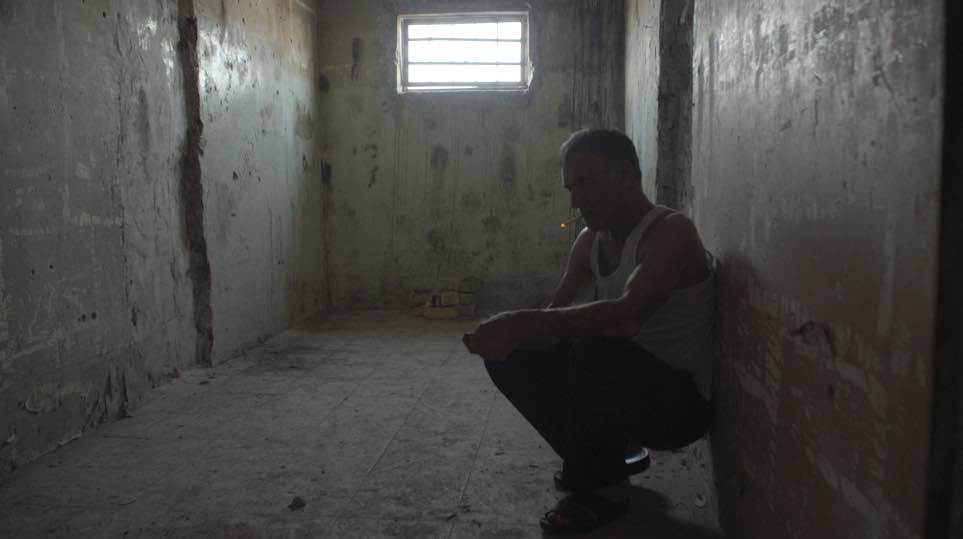
7R: What were some of the challenges in making those reenactments?
Ann Shin: There’s a whole section that didn’t get into the film. It’s about Najah and Zahed talking about their years of torture of prisoners of war. We filmed in a barracks in Iraq, which looked like a barracks that prisoners of war were temporarily held. Some of that footage is in there, with Najah talking about what it was like being a prisoner for 17 years.
It was actually really good to take him back to a location that reminded him what it was like to be in that prison. It took him to a much more deeper emotional place. Many filmmakers who do historical work will have already explored that technique [of bringing subjects to actual locations where the brutality took place].
[clickToTweet tweet=”‘I wanted the reenactments to feel like the same kind of texture as the other footage in the film.'” quote=”I wanted the reenactments to feel like the same kind of texture as the other footage in the film.”]
[That space] was a volunteer militia barracks building. The leader of that militia said we could use the building for this film. He believed in the purpose of the film. After the first day of filming, he was shot and killed up north, in a battle with ISIS. We didn’t go back to Iraq after that. All the militia men were wearing their black uniforms. They were all completely shattered. They were very, very upset. I was very upset, as well. They lose good men every day and someone who helped us out got killed.
[When] we assembled the rough cut, we needed some visual parts to tell the story: when Najah is younger, when he just had the baby. I didn’t want to go back to Iraq to film reenactments. So we ended up going to Amman, Jordan. Amman has neighbourhoods that look like Iraq. A lot of dramatic films will go and film there as a sub-in for Iraq. We worked with a really good team there.
7R: What are some of the challenges of filming a ‘fly on the wall’ style documentary like My Enemy, My Brother?
Ann Shin: The challenge of the fly on the wall technique [were] some of the challenges of filming with the families, too. I didn’t live in the same city [as the families, Vancouver]. So I would keep in touch with the families [to determine] when it was worth it to fly across the country to film with them as things developed If things developed, I would have to hire another crew the very next day to catch it.
When I decided to film with them, and when I decided not to, those were interesting creative decisions. Particularly in Iraq — I don’t speak Arabic — it was hard to tell when to keep rolling on a two hour scene or when to say, “Okay, I think we’ve got enough.” I had a translator, but most of the time [when I didn’t], that was difficult.
What I learned in Iraq was we had to be accepted into the household to be able to film with them. You’ll see men smoking in the living room. You won’t see any women, because women in the house don’t reveal themselves to strangers. I met all the women in a side room with their hijabs. When they saw me, they closed the door. They became very social. It was a really warm, lovely experience: “I’ll reveal myself to you, and you can reveal yourself to me behind the closed doors where there’s no men watching.”
[clickToTweet tweet=”‘I’ll reveal myself to you, & you reveal yourself to me behind closed doors…no men watching.'” quote=”I’ll reveal myself to you, and you can reveal yourself to me behind the closed doors where there’s no men watching.”]
They’re very active. They do group videos and open them in their private Facebook groups. That’s something that I learned, as well, being that fly on the wall, being invited into the household. They accept you. You learn what’s going on in the private goings on of the household that you usually don’t get on film. That didn’t really get into this film just because I had to make it a feature, not a series.
7R: Some of the shots were purposely blurred. Why did you make that aesthetic choice?
Ann Shin: I did that purposely in the reenactments because I wanted to signal to the viewer, in a subtle way, this isn’t actually that person. The face is a bit blurred because it’s not actually Zahed. I wanted to signal that, at a subconscious level, it’s an approximation of what happened.
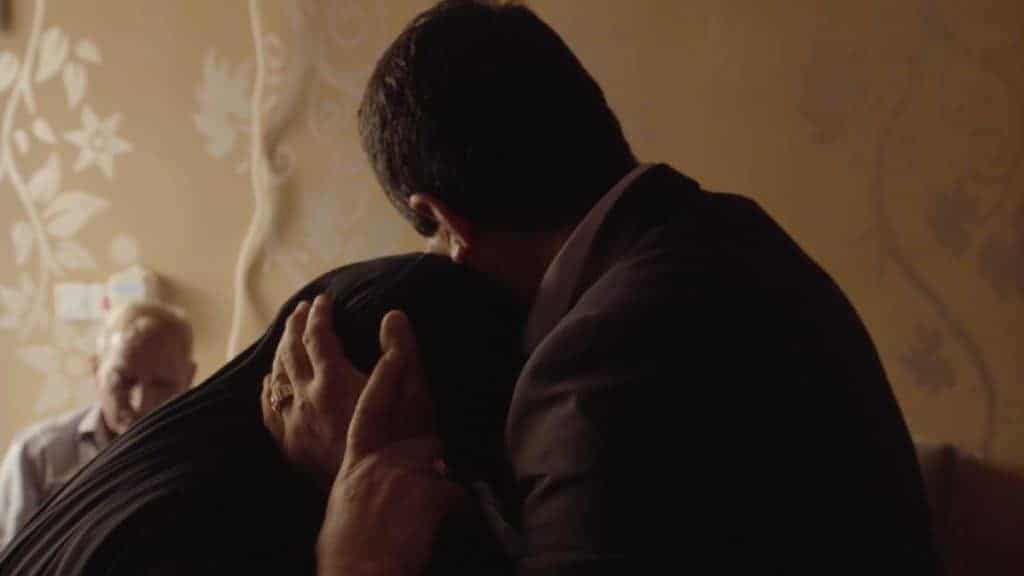
7R: You used a lot of close-ups of Najah’s hands and face. Why did you make that choice in telling the story?
Ann Shin: That was one of the great ideas from Duraid Munajim. We have a character who has so much going on. We thought it would be helpful to have him sitting and thinking and to have those shots there. He wears his life on his face. When he smiles, he has the most charming, beautiful smile. But when his face is at rest, you can see all the lines on his brow. You can see what’s he’s been through. When the editor, Eamonn O’Connor, cuts it, a lot has happened to Najah already. So the slow mo is kind of well paced, I think, for the audience, at that point. The slow mo is [in] close-ups because the audience knows so much of what Najah has been through. They’re allowing it to sink in about this man and where he’s at in his life.
[clickToTweet tweet=”‘We have a character who has so much going on. He wears his life on his face.’ – Ann Shin” quote=”We have a character who has so much going on. He wears his life on his face.”]
7R: Why did you put an effect onto the photography making the image three-dimensional rather than two-dimensional?
Ann Shin: That effect is an Adobe After Effect: what you might call 2 1/2 D —Not just 2D, but not just 3D for sure. It’s an old trick, and a fairly standard trick, when working with archival photos.
It helps you draw the eye to the important person in the photo. It also helps bring a simple 2D photograph and puts it in the language of motion pictures. What you are doing is making the 2D photograph a moving visual image.
7R: Ann, you worked with Hannah on Sugar Sisters and My Enemy, My Brother. Now, you are filming a new documentary together. Why do you keep working with each other, and how did the collaboration begin?
HD: It began 6 or 7 years ago. To work with someone like Ann Shin, she’s very experienced, very talented. She has a head forward, ignore all obstacles [approach]. I find in the film industry, it can be hard to find a woman as powerful as Shin and as talented as Shin. I feel very lucky that I have such a great mentor She trusts me a lot, and we end up with similar goals and the same ideas to accomplish those goals.
Ann Shin: She’s 28, and I’m 48. [both laugh] It’s a really cool partnership because I love the ideas that she brings to the table. Working with her, whether it’s co-directing or co-[producing], we complement one another. Technically, she’s a millennial, right? But that whole label is kind of silly. She’s just a great person to work with, more on the ball and more with it than I am.
This interview was originally published on April 29, 2017.
My Enemy, My Brother aims to explore the political climate through personal stories. We’ve interviewed plenty of documentarians who take this approach: Mila Turajlic’s The Other Side of Everything uses a divided Serbian apartment to explore the trauma of ex-Yugoslavia. Steve James’ Oscar-nominated ABACUS: Small Enough to Jail is about the banking crisis, but it’s also the story of a family. Then there’s Joshua Oppenheimer’s The Look of Silence, which focuses on the one-on-one confrontations between a man name Adi, whose brother was killed during the 1960s Indonesian genocide, and the perpetrators of that genocide.
